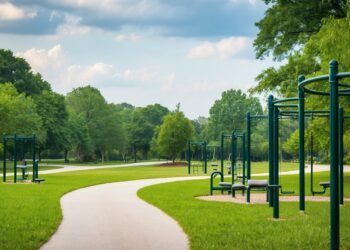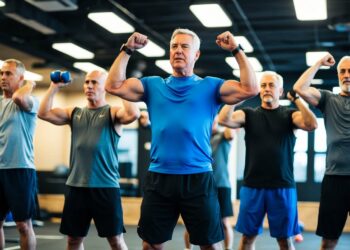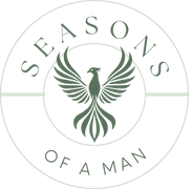Turning 50 can make you wonder if starting or sticking with fitness is even possible. You’re definitely not alone—lots of folks in their 50s wrestle with doubts, motivation dips, or just finding time to move.
Some wonder if age means it’s too late to see results or to enjoy being active. These thoughts can be tough to shake off.
You can break through those mental barriers and make fitness a normal, rewarding part of your life at any age. With the right mindset and a few simple changes, you’ll find yourself enjoying better health, more strength, and a boost in confidence.
This article lays out down-to-earth ways to get started, keep at it, and make movement fit your life—no matter your age.
Understanding Mental Barriers in Your 50s
Mental barriers around fitness can get stronger as you get older. Your past experiences, beliefs, and changes in your body all shape how you see exercise and your ability to stay active.
Common Psychological Obstacles for Adults
Plenty of adults worry about looking silly at the gym or not being as strong as they once were. Comparing yourself to your 20s or 30s can be a real motivation killer.
Other barriers pop up too—like low motivation, fear of injury, or just thinking you’re “too old” to try something new. Anxiety or depression can make it even tougher to get moving.
Negative thoughts—“I’ll never get fit” or “exercise won’t help me”—can shut down your efforts before you even start.
Examples of common mental barriers:
- Self-doubt
- Fear of judgment
- Lack of confidence
- Worry about health limits
Lots of people feel this way, but these feelings can hold you back from real change.
How Aging Impacts Mindset Toward Fitness
As you get older, your attitude toward fitness can shift. You might notice your body recovers more slowly or that exercise feels tougher than it used to.
Loss of muscle mass, stiffness, and worries about chronic health issues can make exercise seem risky or pointless. Some folks start to believe myths like “it’s too late to start” or “exercise isn’t safe after 50.”
It’s easy to focus on what you can’t do instead of what you can. That mindset can stop you from trying new things or even make you quit altogether.
Aging doesn’t mean you can’t improve. Many adults actually find better mood, sleep, and energy when they stay active—even well into their 50s and beyond.
Physical and Mental Health Interconnection
Your mental and physical health are tangled together every single day. Depression, stress, and anxiety can make it harder to get moving, while skipping activity can make those feelings worse.
Exercise helps manage depression, improves sleep, and knocks down stress for a lot of older adults. Physical activity releases brain chemicals that lift your spirits.
When you look after your body, you’re also helping your mind. Even small changes—a daily walk or a quick stretch—can make you feel more confident and capable.
Being active isn’t just about muscles and bones. It’s about feeling calmer, happier, and more in control of your life.
Effective Strategies to Overcome Mental Barriers
Fitness can feel tougher in your 50s—your body changes, life gets busy, and motivation can dip. But you can move past these hurdles with some realistic tweaks and start feeling the benefits of moving more.
Setting Realistic Fitness Goals
Clear, reachable goals make exercise less overwhelming. Instead of saying “get fit,” try aiming for a 20-minute walk three times a week.
Break big goals into smaller steps.
- Add 5 minutes of activity to your weekly routine
- Pick gentle exercises like walking or yoga
- Track your progress to see how far you’ve come
Know your limits and adjust your goals as needed. Celebrate every win, even if it’s small. That’s what keeps you going.
Building a Support System
Support from others makes sticking to exercise way easier. Friends, family, or even a local walking group can boost your mood and help you stay motivated.
Share your goals with someone you trust. Ask them to check in or tag along for a workout.
Ideas for building support:
- Join community classes or clubs
- Find a workout buddy
- Share your progress with loved ones
Encouragement can be a game-changer on tough days. You don’t have to do it all alone.
Addressing Motivation and Self-Belief
Some days you just don’t feel like moving. That’s normal. Remind yourself why you want to exercise—maybe it’s for your heart, more energy, or just to feel less stressed.
Write down the benefits you’re hoping for. Read your list when your motivation tanks.
Focus on what you can do, not what you can’t. Miss a day? Forgive yourself and try again tomorrow.
To boost motivation:
- Celebrate your small wins
- Keep your reasons close
- Don’t compare yourself to others
Positive self-talk really does help keep you on track.
Adapting to Physical and Mental Changes
Your body and mind can shift a lot in your 50s. Sometimes moves feel harder, or you just get tired more easily. Pay attention to what feels right for you.
Adjust your activities to your needs. Try low-impact workouts if your joints ache. Stretching and balance work can keep you safer and more comfortable.
If you feel anxious or stressed, start slow and pick activities you actually enjoy. Listen to your body. Rest when you need it, and be proud of any progress—big or small.
Staying flexible with your routine helps you find what works for your life right now. That’s how you keep moving and stay safe.
Choosing the Right Fitness Activities for Older Adults
Staying active in your 50s matters for your health, independence, and mood. Different workouts help your body in different ways, so mixing them up can give you the best results.
Importance of Aerobic Activity
Aerobic activities help your heart, lungs, and blood flow. Walking, swimming, dancing, or biking all count. These make everyday things—like climbing stairs or carrying groceries—a bit easier.
Shoot for at least 150 minutes a week of moderate activity, like brisk walking or easy cycling. If you’re up for it, 75 minutes of something more lively—like jogging or swimming laps—works too. You can break it up into 10- or 15-minute chunks if that fits better.
Aerobic activity isn’t just good for your body. It can lift your mood and energy, and you might even sleep better.
Incorporating Moderate- and Vigorous-Intensity Exercises
Moderate-intensity workouts make your heart beat faster, but you can still talk. That’s things like mowing the lawn, water aerobics, or a brisk walk. Vigorous intensity? You’re breathing hard and can only say a few words at a time—think running or fast cycling.
Table: Examples of Activity Intensity
| Moderate-Intensity | Vigorous-Intensity |
|---|---|
| Brisk walking | Running |
| Water aerobics | Fast biking |
| Doubles tennis | Hiking uphill |
| Casual dancing | Swimming laps |
Mixing up moderate and vigorous activities keeps things interesting and helps you reach your goals. Always tune in to your body and make changes if something doesn’t feel right.
Benefits of Muscle-Strengthening Activities
Muscle-strengthening exercises help you do daily tasks with less effort and avoid injuries from falls. Try lifting weights, yoga, or using resistance bands.
Aim for muscle-strengthening at least two days per week. Hit all your major muscle groups—legs, hips, back, chest, core, shoulders, and arms.
If you’re new or want something gentle, start with bodyweight moves like wall push-ups or chair squats. Building muscle also keeps your bones strong and your balance steady as you age.
Maintaining Consistency and Long-Term Motivation
Ups and downs happen on your fitness journey in your 50s. Staying consistent, tracking your progress, and using fitness to manage health issues can help you stick with it and feel your best.
Celebrating Progress and Small Wins
Noticing your progress really boosts your outlook. Track things like walking farther, lifting more, or just finding daily tasks easier. Jot these milestones in a journal or use an app if that’s your thing.
When you hit a small goal, treat yourself—maybe with a new workout shirt or an extra episode of your favorite show. That little reward can keep you looking forward to your next session.
Even the tiniest wins count. Over time, they add up and keep you moving forward.
Monitoring Health Improvements
It’s smart to watch how your fitness plan changes your health. Maybe you notice more energy, better sleep, or just less stress. Write down mood changes or how your daily activities feel.
If you manage a medical condition, check if your numbers improve. For example, track your blood pressure, blood sugar, or cholesterol with your doctor. Here’s a quick table for what to track:
| Health Factor | How to Track |
|---|---|
| Blood Pressure | Home monitor, doctor visits |
| Blood Sugar | Glucose meter, lab tests |
| Sleep Quality | Notes or app |
| Mood | Journal |
| Energy | Daily notes |
Seeing those improvements reminds you why you’re putting in the effort.
Managing Health Conditions Through Fitness
Exercise can really help control chronic diseases like diabetes and high blood pressure. Physical activity lowers blood sugar, strengthens your heart, and helps keep blood pressure in check.
You don’t need intense workouts. Consistency is key—try brisk walking, swimming, or gentle routines most days. If you have health worries, check with your doctor before starting.
Movement is good for your mind too. It eases anxiety and can lift your mood. If you stick with your plan, you’ll manage health conditions better and enjoy daily life with more ease.










